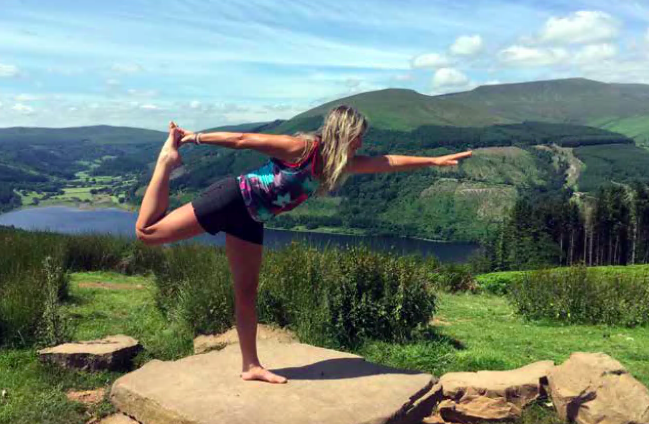So far, I have covered the ethos of functional fitness, the benefits of stretching and the secrets of motivation. So, in theory, you should be clued up, warmed up and raring to go …
But as I’m sure you will have noticed, this ‘fitness’ column isn’t like most others, which give you a list of burpees, squats, push ups, mountain climbers and jumping jacks to do.
We are taking it slow and steady. I want the changes you make to last, and developing a discipline into a habit is the best way to get those lasting results.
Like a lot of people I went through a stage of ‘researching’ various workouts on YouTube and the old fashioned way–reading books. After an hour of watching someone else workout or trying to understand diagrams and sketchy instructions I either felt like I had actually done the workout or could in some strange way, convince myself that I had.
We are a weird lot. We know what’s good for us and what we should or could do to improve our health and lifestyles but actually implementing it seems nigh on impossible.
I have recently had an issue with inflammation in various joints, and after blood tests reassured me that everything was ‘OK’, I set about trying to reduce inflammation through food, by changing what I eat.
After being vegan for five or six years I am now vegetarian and still eat very little dairy. That’s a good start with regard to reducing inflammation but obviously it wasn’t enough.
For the last couple of weeks I have made more tweaks, including incorporating turmeric, black pepper and ghee into a meal most days.
The difference has been quite amazing. I have also returned to using Forever’s Marine Collagen, which I would rather not have to ‘invest in’ but does undoubtedly make a positive difference to my health and joints in particular.
I have learned that before we can progress on any fitness journey, we have to strip things right back and start right at the beginning. Whilst some exercises will help improve joint issues, making sure they are in the very best condition possible before you start will give you a huge advantage in continuing with your endeavors. Injury, and even aches and pains, are one of top reasons people stop exercising – or excuse not to start.
And whilst most people cite ‘losing weight’ as the main reason to start exercising, it is not the most helpful reason, as most weight loss will need a change in ‘food awareness’ rather than signing up to a gym or class.
There is a great saying ‘You cannot out-exercise a bad diet’. I’ll cover more about nutrition later on but the more research you can do the better.
Back to ‘functional fitness’–whilst training to become a Pilates teacher I was reminded how important posture and core strength is and we can work on both anywhere at anytime. No excuses whatsoever for not doing this one.
We start all classes by checking and realigning our posture and preparing our body with several small moves or adjustments.
Stand tall as though you have a piece of string coming out of the top of your head pulling you upwards. Shoulders should be rolled back and down – I bet yours are up around your ears (most are) – and try to lower your shoulder blades as though you were trying to get them into your back pockets. Lower your ribcage and pull your belly button in toward your spine. Imagine that you were putting jeans on that have just been drying on a radiator and the metal rivet is still hot.
Pull your stomach away from the rivet. To be really picky about this, imagine a point midway between your hips–so just below your belly button – and that is where you ideally need to ‘pull in’ from. It is definitely more effective from this point but harder to remember. Lift your pelvic floor – applicable for men too – as though you were trying to stop the flow mid-pee.
Hips should be level and facing forward, knees soft and feet about hip width apart with your weight equally distributed between both feet.
Once you have got into this position, mentally scan your body and note where you feel uncomfortable or have tension.
It will probably feel a totally unnatural position to begin with but is ‘ideal posture’. It is shocking how we all stoop and will be used to resting on one leg when we stand, (which pushes our hips out of alignment), to mention just a few ‘bad habits’.
Shoulders are always the one that catches me out – as aware as I am that they should be ‘back and down’ they will slowly creep up and be tense.
That alone is the cause of a lot of tension headaches amongst other stresses and strains. A few shoulder shrugs and then consciously lowering them will help to redress the issue and form new ‘good’ habits. It’s often helpful to buddy up with someone when relearning these things as they can point out when you revert to hunching or stooping, for example.
With regard to improving ‘core strength’ – so important for lower back strength too – simply keep those stomach muscles engaged and ribs lowered – as though you are trying to get your bottom ribs to meet the top of your hips (but without bending).
You can do this all day–when walking, driving, working, sitting – everywhere and anywhere. And when you realise that you’ve forgotten, just re-engage.
As Vincent Van Gogh said, “Great things are done by a series of small things brought together.’

.jpeg?width=209&height=140&crop=209:145,smart&quality=75)



Comments
This article has no comments yet. Be the first to leave a comment.